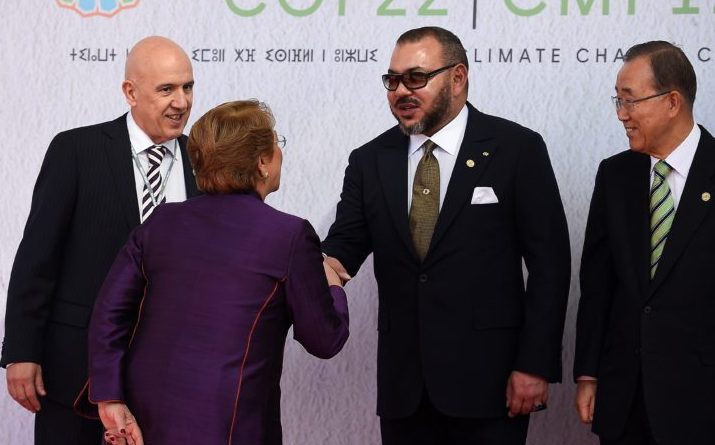COP 22: One year after Paris
Photo by Gobierno de Chile/CC by 2.0
Article by Hannah Klaus
Leaders and representatives from 197 nations wrapping up twenty second annual Conference of the Parties (COP22) and the twelfth session of the Conference of the Parties serving as the meeting of the parties to the Kyoto Protocol in Marrakech, Morocco. The “Conference of the Parties” (COP) is a decision making body of the United Nations Framework Convention on Climate Change (UNFCCC). UNFCCC was established in 1992 at the Earth Summit in Rio de Janeiro and entered into force in 1994. There have been yearly COPs since then. COPs are intended to provide support and organization for the parties in order to effectively fight climate change in a collective effort (3, 4).
This year’s convention is building off of the progress made during COP21, where the Paris Climate Agreement was developed. In a demonstration of swift and unified action, 110 of the 197 parties to the convention have ratified the agreement so far, allowing the agreement to enter into force on November 4th of this year. In total, the nations that ratified that agreement account for 55 percent of worldwide greenhouse gas emissions. The main objectives of the Paris Climate Agreement are to keep global temperature rise below 2 degrees Celsius preindustrial levels and to strengthen mitigation and adaptation strategies (5).
COP22 serves as an opportunity to check in on the progress of the Paris climate agreement within the first year, and to advance forward. A central goal of COP 22 this year, and of previous conventions, is to continuously lower the quantity of greenhouse gases emitted, globally. The leaders of the convention are encouraging countries to commit to a low carbon economy (4).
A second focus is that of global solidarity and collective action in the face of climate change’s challenges. COP sets a clear intention to strive for justice and equality in the process of reducing emissions. For example, the UNFCCC states that certain nations, such as small islands and certain developing nations, are particularly vulnerable to the effects of climate change. Salaheddine Mezouar, President of COP22, says that this convention is, “opportunity to make the voices of the most vulnerable countries to climate change heard, in particular African countries and island states. It is urgent to act on these issues linked to stability and security.” (4).
The convention, which began on November 7th, and will commence on the 18th, has been tainted by the election of Donald Trump, who has outwardly denied climate change. As the world’s second largest emitter of greenhouse gas, following behind China, it is critical the U.S.is committed to objectives of the Paris climate agreement (2).
However, uncertainty of how much the U.S. will make good on it’s word under a Trump Presidency is already dominating conversations. According to reports from the convention, the first sessions of COP 22 were spent discussing the involvement of the U.S. rather than how to logistically achieve the objectives of the Paris climate agreement (1).
- Asermely, Ellen. “Donald Trump’s Election Cast Shadow over COP22.” Morocco World News. November 16, 2016. Accessed November 16, 2016. https://www.moroccoworldnews.com/2016/11/201527/donald-trumps-election-cast-shadow-cop22/.
- “Infographic: What Do Your Country’s Emissions Look Like?” World Resources Institute. Accessed November 16, 2016. http://www.wri.org/blog/2015/06/infographic-what-do-your-countrys-emissions-look.
- “Marrakech Climate Change Conference – November 2016.” Marrakech Climate Change Conference – November 2016. Accessed November 16, 2016. http://unfccc.int/meetings/marrakech_nov_2016/meeting/9567.php.
4.”The Challenges of COP22.” Marakech COP22/ CMP12/ CMA1. Accessed November 16, 2016. http://cop22.ma/en/#.
- “The Paris Agreement.” The Paris Agreement – Main Page. Accessed November 16, 2016. http://unfccc.int/paris_agreement/items/9485.php.

